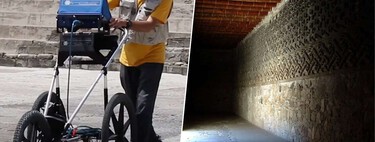When talking about the Mayans and Mesoamerican peoples, Palenque, Teotihuacan, Oaxaca, Tlatelolco and Chichen Itza are almost always associated with one another. All of them are important archaeological sites, and, as for the great cities of the past, we currently have some of the most important in the country. Mexico City, for example, was built on Tenochtitlan and Tlatelolco. However, looking at the Yucatan Peninsula, there is one name that does not stand out as much: Oxtankah.
In the past, it was one of the most important points in the eastern region of Yucatan, and a recent study may restore its former glory.
Oxtankah. In the southeast of the state of Quintana Roo and near the city of Chetumal, lies one of the most important Mayan cities. Now we may overlook Oxtankah, so much so that not even we know its original name. The current one was given in 1937 by the researcher Alberto Escalona Ramos and means “place between three towns” or “place surrounded by ramones” (the ramón is a tree, the Brosium alicastrum). Today, Oxtankah is not one of the most visited archaeological sites in Mexico, nor in Yucatan, but you can see vestigessuch as houses or ceremonial buildings.
Privileged position. The city’s peak is estimated to have occurred between 250 and 600 AD. This is the period known as the Early Classic and it is believed that several improvements were made to the city, such as modifications to increase the proportions of various structures, murals were created on the stucco to transmit their culture and there were ceremonial structures that acted as sanctuaries. And this peak occurred due to the privileged position of the settlement.
Oxtankah is located The site was situated on several cenotes, which allowed the inhabitants to easily obtain fresh water. They were also located next to the sea, being one of the gateways to the Caribbean, so there was no shortage of fish and an important trade network with other areas could be developed. Oxtankah could trade by sea, which was a much faster route than the land routes of many other Mesoamerican areas.
Migrations. And that port was the key to population exchanges during the Classic period. At least, that is what Allan Ortega, a researcher at the INAH in Quintana Roo, believes. After his research, he has commented Oxtankah was the jewel in the crown of migration in the eastern region of Yucatan. This opening to the sea, historically, is something vital for the populations and we have already seen that Tlatelolco was a very important cultural center thanks to its port.
Ortega has analyzed stable isotopes of strontium and oxygen in more than 300 bone pieces from five archaeological sites in Quintana Roo:
- The meco.
- The King.
- San Miguelito.
- Tulum.
- Oxtankah.
He also looked at previous studies on the diet and cranial characteristics of 87 other skeletons from areas such as Teotihuacán, Palenque, Monte Albán, Toniná, El Mirador, Copán and Kaminaljuyu. There were individuals of both sexes and all ages, which has allowed him to draw up a kind of migratory map that shows the patterns of geographic mobility along the eastern coast of Guatemala and other cities in the Gulf of Mexico.
Exchange… of everything. This study has allowed us to verify the population exchange in these areas. For example, people from the Gulf arrived at some point in Tulum or El Rey, areas where remains of people from northern Belize were also found. But, as Ortega states, Oxtankah was the point where the most relations with other places could be established, something that has already been I suspected.
They consider that the site was a meeting point from the Preclassic and Early Classic periods with other areas such as Altar de Sacrificios in Guatemala, as well as with Dzibanché, Calakmul and Kohunlich in Campeche. This meant that population exchanges took place in these areas, but evidently also made Oxtankah an ancient multicultural center, with political, economic, demographic and biological exchanges.
The archaeological site. In the Late Classic and Postclassic periods, the city went into decline. From being a very important commercial and cultural center, it was relegated to a kind of site where locals made offerings. When the Spanish arrived, they built a chapel, but the site had not been used as an urban center for centuries.
What was once an important commercial and geopolitical point, one of the most powerful Mayan ports, now has several niches, floors of houses, buildings that would have been sanctuaries and the remains of the 16th century Spanish chapel (and its graffiti), with a design very similar to that of Dzibilchaltún, in the north of the peninsula.
Perhaps with the Mayan Train, Oxtankah can have a glorious second life.
Images | INAH
At Xataka | The Mayan Train has put Mexico’s treasures in the spotlight. Now is the time to dress them up




![[Img #74674]](https://thelatestnews.world/wp-content/uploads/2024/12/Santiago-Ramon-y-Cajal-The-promoter-of-modern-neuroscience-150x150.jpg)








![[Img #74674]](https://thelatestnews.world/wp-content/uploads/2024/12/Santiago-Ramon-y-Cajal-The-promoter-of-modern-neuroscience-300x200.jpg)


Add Comment